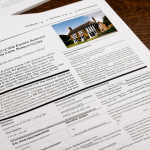Impact of Proposed Property Tax Changes on UK Buy-to-Let Profits
The property tax changes UK currently under consideration are set to significantly influence the financial dynamics of buy-to-let investments. Central to these reforms are revisions to landlord taxes, particularly affecting how rental income is treated for tax purposes. Landlords may face increased tax liabilities as allowances are adjusted and certain reliefs, such as mortgage interest relief, are further restricted. This could lead to a reduction in net rental yields for many investors.
One of the main aspects influencing buy-to-let impact involves the gradual phasing out of mortgage interest tax deductions, which historically allowed landlords to deduct interest payments from taxable income. As these deductions decrease, the effective taxable portion of rental income rises, adversely affecting landlord profits and potentially squeezing the cash flow essential to maintaining and expanding property portfolios.
Have you seen this : Adapting your property portfolio for success: navigating the effects of emerging uk building regulations
Additionally, changes to stamp duty rates on second properties continue to affect acquisition costs, thereby influencing investment decisions and overall returns. The government has proposed a structured timeline for implementing these property tax changes UK, with new rules expected to be phased in over several years. This phased approach provides both current and prospective landlords a window to adapt their strategies accordingly but also underscores the urgency of proactive financial planning.
Understanding the timing and exact nature of these reforms is crucial for those engaged in the buy-to-let market. Investors should closely monitor upcoming announcements to assess how landlord taxes and revised allowances will alter their investment landscape, and to prepare for shifts in rental income taxation that will directly affect profitability.
Also read : Discover the financial perks: unveiling the benefits of uk co-living spaces
Specific Property Tax Reforms and Their Application to Buy-to-Let Investments
Detailed examination of property tax reform reveals several critical changes directly affecting buy-to-let landlords. One significant reform concerns capital gains tax, which is being recalibrated to reduce some reliefs previously available to landlords when selling properties. This adjustment means that profits realized from property sales will be taxed more heavily, potentially diminishing overall investment returns if not planned for carefully.
Simultaneously, changes to mortgage interest relief continue to exert pressure on returns. The reforms phase out mortgage interest tax relief, transforming what was once a deductible expense into a tax credit at a lower rate. This shift markedly increases taxable rental income, reducing net profits for landlords relying on leveraged investments.
Moreover, the stamp duty surcharge specific to buy-to-let properties remains a key cost consideration. Higher rates are levied on second homes and investment properties, inflating initial acquisition costs. This surcharge affects cash flow and investment calculations, compelling landlords to reassess buy-to-let impact more carefully during property acquisition.
Together, these reforms constitute a comprehensive reshaping of the tax environment for buy-to-let landlords. Understanding how each element—capital gains tax adjustments, mortgage interest relief restrictions, and stamp duty surcharges—works in tandem is vital for making informed decisions under the evolving property tax changes UK.
Impact of Proposed Property Tax Changes on UK Buy-to-Let Profits
The property tax changes UK currently proposed carry significant consequences for the buy-to-let impact on landlords’ bottom lines. Foremost among these is the reduction of mortgage interest relief, which directly increases taxable rental income and diminishes landlord profits. As mortgage interest previously allowed landlords to offset borrowing costs against income, its diminishing availability means tax bills will rise even if gross rental income remains stable.
Revised landlord taxes will also alter net rental yields, as increased tax burdens reduce cash flow margins. Landlords relying heavily on leveraged property investments may experience tighter profitability, forcing a reassessment of business models. Moreover, changes in capital gains tax and stamp duty surcharges (covered elsewhere) compound these effects, collectively squeezing investment returns.
Implementation of these property tax changes UK is planned over several years, permitting some adaptation time. Current investors should factor in the phased timeline to strategize portfolio management proactively. New landlords entering the market face an immediate recalibration of expected returns; thus, understanding evolving tax liabilities is essential for sound investment decisions.
Being aware of the varying treatment of rental income and associated taxes helps investors anticipate changes to their financial flows. The combination of altered allowances and shifting tax rates promises a reshaped environment, making vigilance and early planning critical to sustaining profitable buy-to-let ventures.
Impact of Proposed Property Tax Changes on UK Buy-to-Let Profits
The upcoming property tax changes UK are poised to reshape the financial returns from buy-to-let investments substantially. These adjustments include increased tax liabilities stemming from revised landlord taxes and shrinking allowances that directly affect rental income. Specifically, as mortgage interest relief continues its phased reduction, landlords will face a higher taxable income base, thereby shrinking net rental yields and compressing overall profitability.
This evolution in the tax environment means that for many landlords, especially those who rely heavily on borrowing, the buy-to-let impact will be a notable decrease in cash flow. Revised tax rates and restrictions on deductions amplify this effect, making it essential for landlords to evaluate not only current profitability but also long-term sustainability. Elevated landlord taxes may compel investors to reconsider property acquisition strategies, financing methods, or rental pricing to maintain acceptable returns.
The government’s implementation schedule for these tax reforms spans several years, providing a transitional period. Current landlords have the opportunity to optimize their portfolios before full enforcement, while new investors must immediately incorporate these changes into their financial projections. Being aware of this timeline facilitates more informed decision-making, helping landlords plan for increasingly stringent tax conditions and their influence on the market.






